A mascot dog of World War II.
Each unit often had its own mascot dog, adopted in the field or brought from the home country. Some of these dogs became true symbols for their regiments. Their mere presence brought a touch of normality amidst the horrors of war. They welcomed soldiers returning from leave or missions, participated in daily routines, and symbolized a reassuring link to pre-war life. They sometimes took part in ceremonies and even received honorary decorations.
Duke, a German Shepherd, was the iconic mascot of the 334th Fighter Squadron within the famous 4th Fighter Group of the U.S. Army Air Forces during World War II. Known for his mischievous yet endearing character, Duke appears in more than a dozen period photographs of the group, often at the heart of the pilots’ daily life.
Originally, Duke belonged to another soldier, but after that soldier was killed in action, pilot Kidd Hofer took him in and made him his loyal companion. Following the tragic death of Kidd Hofer in 1944, it is likely that Duke was adopted by another group member, Deacon Hively, who survived the war.
Duke is remembered as a true member of the squadron, embodying the spirit of camaraderie and resilience that characterized the pilots of the 4th Fighter Group.
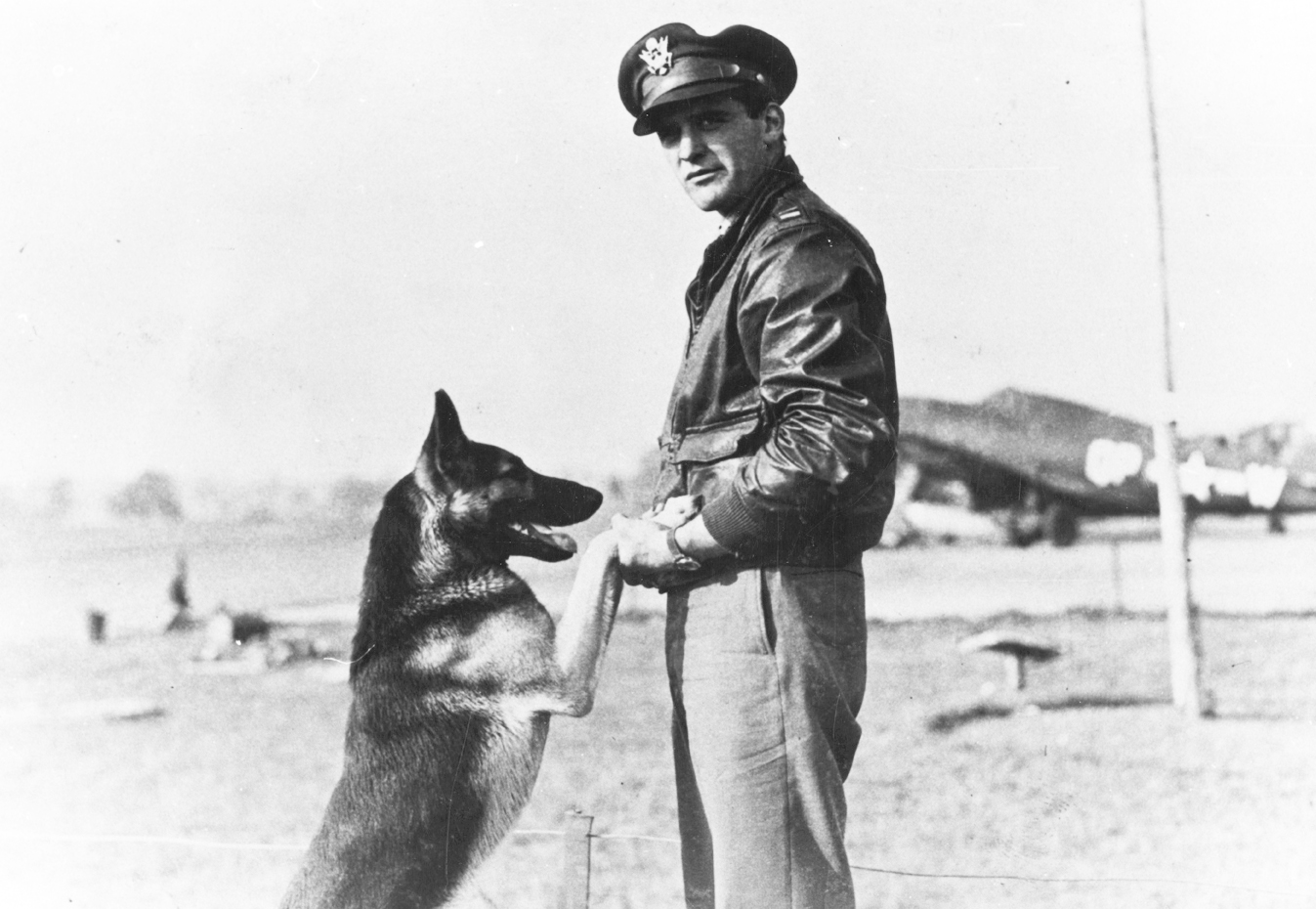
Captain James A. Clark holds the paws of the German Shepherd named Duke. In the background is a P-47 Thunderbolt of the 334th Fighter Squadron at Debden Air Base. October 15, 1943.
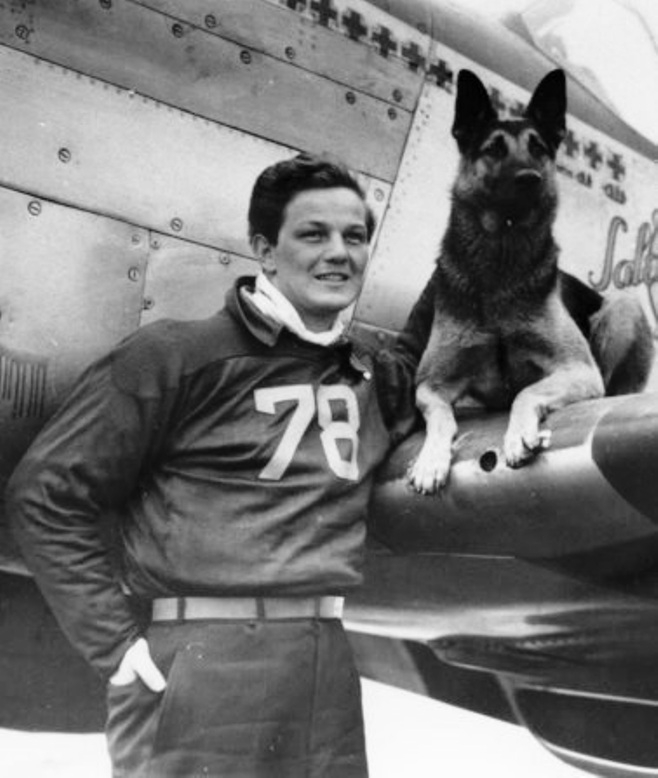
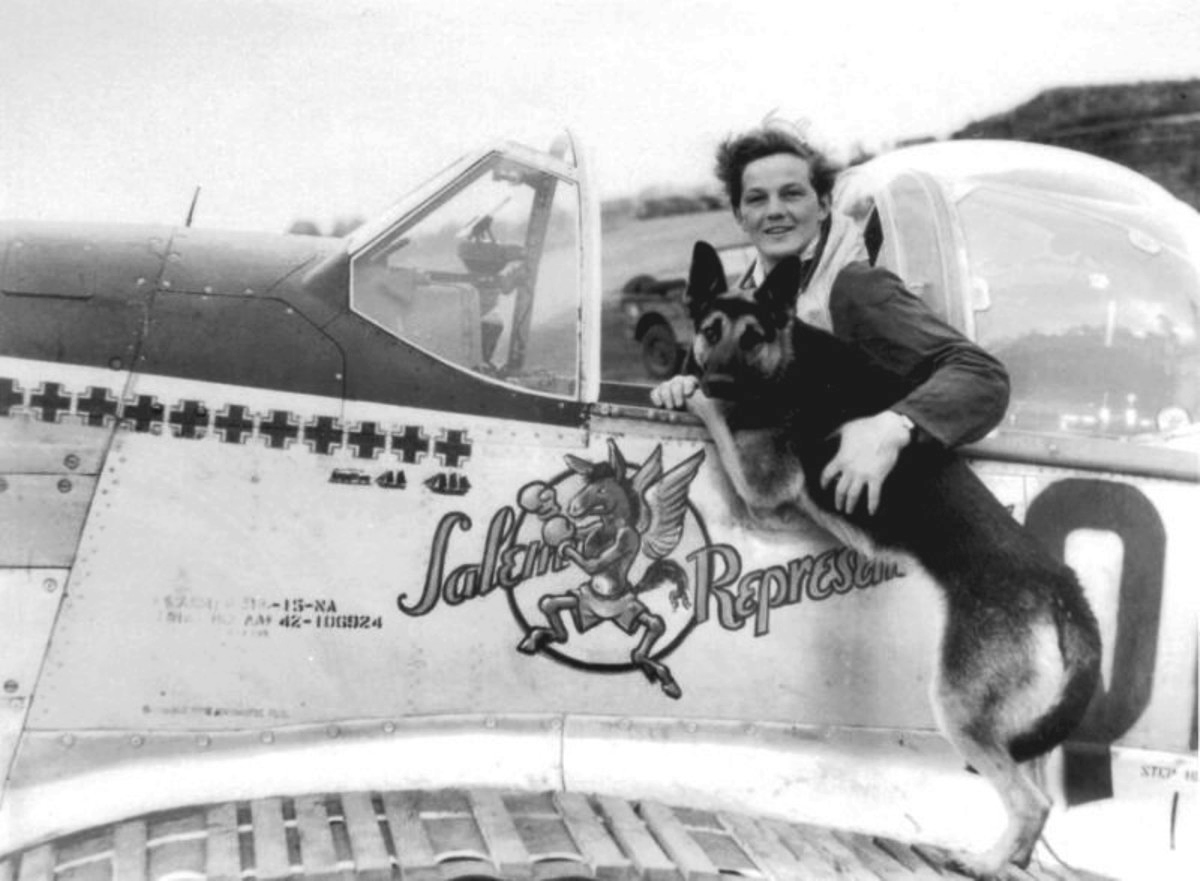
Lieutenant Ralph L. "Kidd" Hofer of the 334th Fighter Squadron, accompanied by his dog Duke, on the wing of P-51B No. 42-106924 QP-L named Salem Representative.
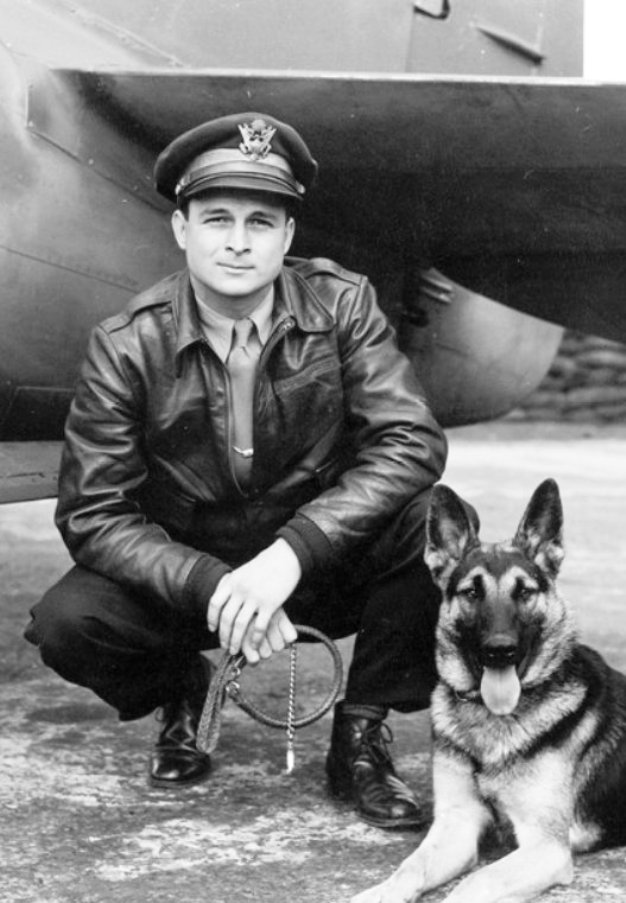
Captain Robert G. "Digger" Williams of the 334th Fighter Squadron, 4th Fighter Group, 8th Air Force, with Duke.
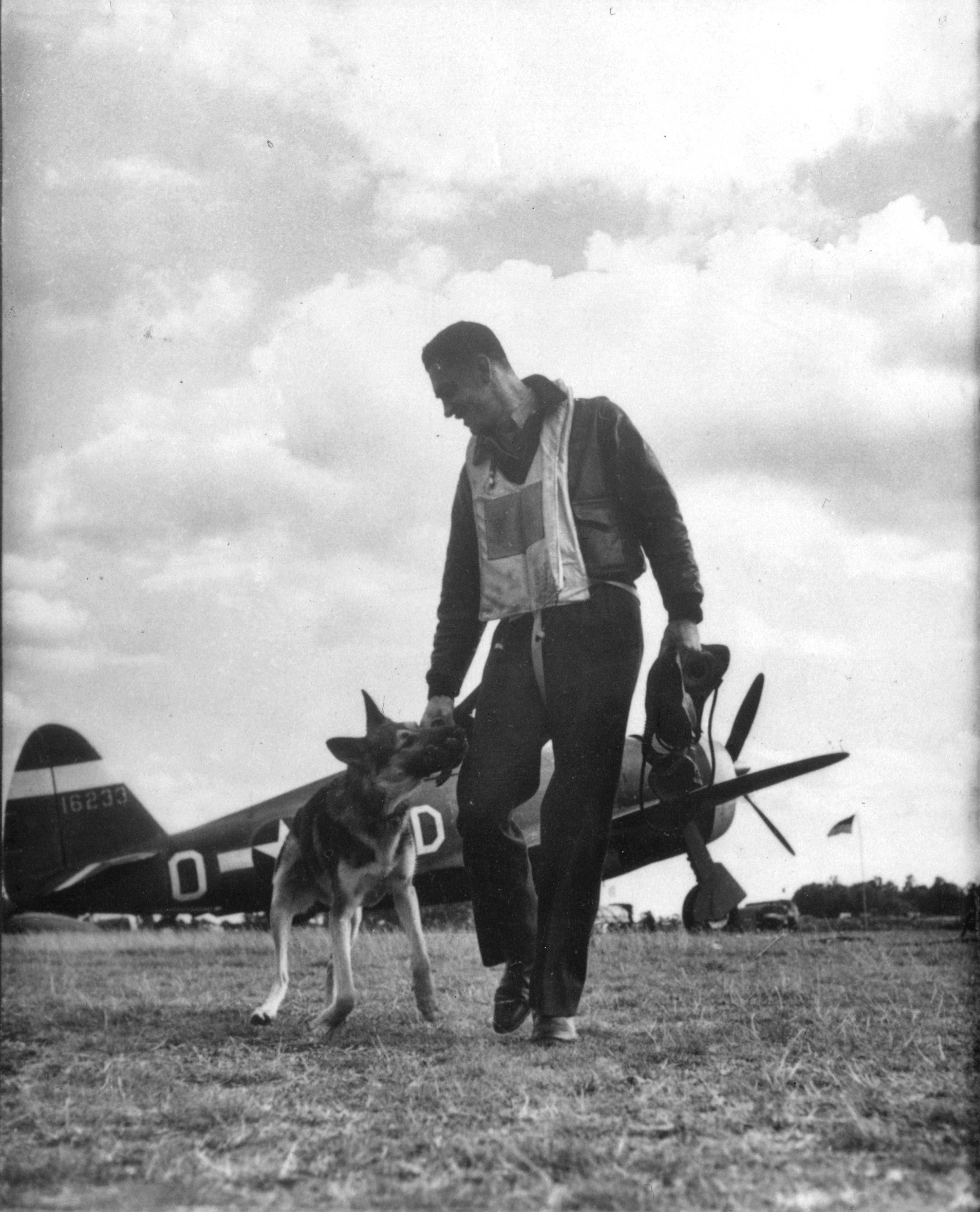
Duke, mascot dog of a P-47 Thunderbolt squadron based in England, playfully tugs at the glove of Lieutenant Howard D. (Deacon) Hively after the pilot landed his fighter following a mission over enemy territory. October 1, 1943.
SOURCE/PHOTOS: American Air Museum